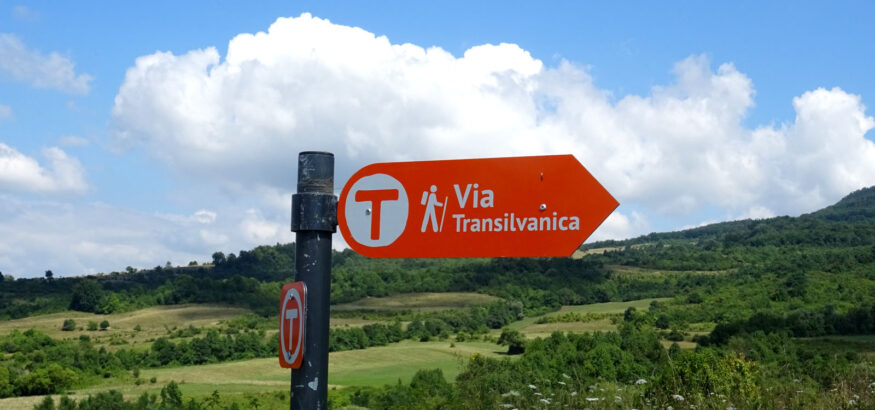Via Transilvanica the Path that Unites – Discover Terra Saxonum
Via Transilvanica, known as "the road that unites" is an extraordinary 1,400-kilometer route stretching across Romania, from the northern town of Putna to Drobeta Turnu Severin in the south. Designed for hikers, cyclists, and horseback riders, this path takes adventurers through Romania's diverse landscapes, steeped in cultural and historical significance. Along the way, travelers will encounter a series of beautifully painted markers and intricately carved andesite stone posts, transforming the trail into a one-of-a-kind open-air gallery that spans the entire journey.
This impressive route crosses through ten counties—Suceava, Bistrița-Năsăud, Mureș, Harghita, Sibiu, Brașov, Alba, Hunedoara, Caraș-Severin, and Mehedinți—connecting seven distinct regions: Bucovina, Ținutul de Sus, Terra Siculorum, Terra Saxonum, Dacian Land, Banatic Land, and Roman Land. Passing through 107 towns and villages, Via Transilvanica offers a rare opportunity to explore Romania’s natural beauty and cultural treasures, with each region adding its flavor to the experience.
Modeled after famous long-distance routes in Europe and North America, Via Transilvanica is more than a scenic trail—it’s a community-driven project. Its main goal is to rejuvenate underpopulated and economically challenged areas of Romania by drawing travelers who, in turn, bring vitality to these often-overlooked villages. By walking or cycling along this path, visitors offer locals the chance to share their stories and hospitality, building a meaningful connection between people and place.
Exploring Via Transilvanica: A Journey Through History and Nature
Among the route’s most captivating sections is Terra Saxonum, the land of the Saxons. Beginning in Archita, this region crosses the counties of Brașov, Mureș, and Sibiu, offering a window into the legacy of the Saxon people of German origin who once lived here.
Their enduring mark can be seen in the architecture of their homes, the fortified churches, and the famous "bacon towers," communal structures where the villagers stored food for winter. The towers were opened weekly, allowing each family to collect their provisions without disturbing others’ supplies—a symbol of the Saxons' unity and trust.
Today, Terra Saxonum serves as a beautiful reminder of Transylvania's Saxon heritage, blending historical depth with scenic wonder. For those embarking on this journey, it promises an unforgettable exploration of Romania’s past and a deeper appreciation for its cultural richness.



Comments are closed.